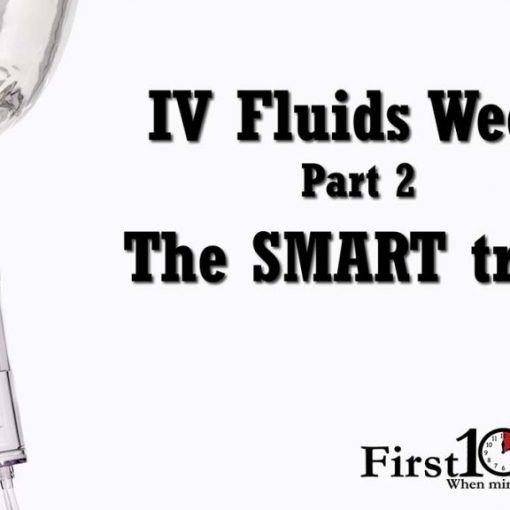Case
You are looking after a 30 year old woman with an isolated femur fracture, and decide to help manage her pain with a nerve block. Unfortunately, your ultrasound machine was broken so you attempted to do the femoral nerve block blind, using bupivacaine. Shortly after injecting the anesthetic, she complains of a headache, dizziness, and numb lips. Then she loses consciousness. You glance at the monitor and notice a wide complex tachycardia. Can you remember the approach to local anesthetic toxicity?
My approach
Get help in the room and start your standard ACLS protocols.
Warn the team that this might be a prolonged code given its toxicologic etiology and the young, otherwise healthy patient. Focus on good quality compressions and maintaining good cerebral blood flow.
Sodium Bicarbonate
- Bupivacaine is a sodium channel blocker, so treat any wide complex by pushing amps of sodium bicarbonate
- In a prolonged resuscitation, if the pH rises about 7.5 you can switch to hypertonic saline or sodium acetate
IV lipid emulsion therapy
- Initial bolus of 1.5ml/kg (approx 100ml in 70kg adult)
- Start an infusion of 0.25ml/kg/min (approx 1L/hr in 70kg adult) for 30-60min (you can can double this rate if needed)
- Repeat the bolus at 5 minutes if ongoing cardiovascular instability
If there are seizures
- Focus on use of benzodiazepines
- Phenobarb is probably the best second line
- Avoid phenytoin
- Probably avoid propofol as well, as it is a direct cardiac depressant
Methemoglobinemia
- Bupivacaine is not usually associated with methemoglobinemia, but if you were using a mixture of anesthetics, consider and treat with methylene blue 1-2mg/kg IV
If not improving, consider transfer to an ECMO centre.
Notes
Epinephrine may reduce the efficacy of lipid therapy. Dr. Weinberg of lipidrescue.org sugests a decreased epi dose of less than 1mcg/kg for treating hypotension.
Other FOAMed Resources
Local Anesthetic Systemic Toxicity (LAST) on REBEL EM
Intravenous lipid emulsion as antidote on Resus.me
Intralipid – myth or miracle? on LITFL
Bupivacaine toxicity Rx on OpenAnesthesia
Lipid Rescue: Why Aren’t We Using It? on ALiEM
References
Morgan DL, Borys DJ. Chapter 47. Poisoning. In: Stone C, Humphries RL. eds.CURRENT Diagnosis & Treatment Emergency Medicine, 7e. New York, NY: McGraw-Hill; 2011. http://accessmedicine.mhmedical.com/content.aspx?bookid=385&Sectionid=40357263.
Benowitz NL. Chapter 9. Anesthetics, Local. In: Olson KR. eds. Poisoning & Drug Overdose, 6e. New York, NY: McGraw-Hill; 2012.http://accessmedicine.mhmedical.com/content.aspx?bookid=391&Sectionid=42069823.
Salinas FV. Local Anesthetic Systemic Toxicity. In: Atlee JL. Complications in Anesthesia, 2e. Philadelphia, PA: Saunders; 2007.
Weinberg GL. Lipid emulsion infusion: resuscitation for local anesthetic and other drug overdose. Anesthesiology. 2012;117(1):180-7. PMID: 22627464
Morgenstern, J. Local anesthetic toxicity, First10EM, April 4, 2015. Available at:
https://doi.org/10.51684/FIRS.259






One thought on “Local anesthetic toxicity”